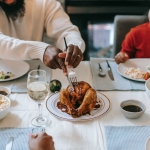Kids depend on their parents in many senses, but especially emotionally. However, sometimes parents can seek a level of emotional support from their child that should be pursued and fulfilled in an adult relationship.
This dynamic is called “emotional incest,” with the child taking on an inappropriate level of emotional support for their parent, while the child’s own emotional needs are being ignored or overshadowed. This behavior can be very harmful to young children, with the impact lasting well into adulthood.

What Is Emotional Incest? Defining Emotional Incest
Emotional incest, also known as covert incest or a form of emotional abuse, refers to a situation in which a parent or caregiver relies on their child for emotional support in a way that is inappropriate and exceeds typical parent-child boundaries. This can involve a parent relying on the child for emotional support, validation, or companionship in a way that is inappropriate for the child’s age and developmental stage. Emotional incest does not involve physical abuse or sexual abuse, but centers around emotional and psychological boundaries being violated.
In these situations, the parent may share adult concerns, problems, or intimate details about their own life with the child, treating the child more like a surrogate spouse or emotional partner than a child. This can lead to the child feeling burdened with adult responsibilities and emotional issues that are not developmentally appropriate for their age, causing harmful long-term effects and developmental consequences for the children involved, as they feel emotionally abandoned.
The impact of emotional incest can be significant and may involve:
- Difficulty forming healthy adult relationships
- Low self-esteem
- Anxiety
- Depression
- Distorted sense of boundaries
- Delayed or interrupted social-emotional development
It’s important to note that emotional incest is a form of emotional abuse and can have long-lasting effects on an individual’s emotional well-being. If someone is experiencing or has experienced emotional incest, seeking support from a mental health professional can be beneficial in addressing and coping with the impact of these experiences.
What Causes Emotional Incest to Occur?
Emotional incest may take root for a couple of reasons:
- A marriage or relationship is crumbling.
- There is an otherwise broken family dynamic (e.g. infidelity, loss, divorce).
- A parent is feeling intense feelings of loneliness.
- A parent has mental health conditions.
- A parent is dealing with addiction.
Parents who adopt this kind of relationship with their children do not typically realize the impact their behavior may have on them. In any case, emotionally relying on one’s children as a parent is not fair to them in any capacity, and can be extremely hurtful and damaging to their well-being in the short and long term.
Navigating Emotional Incest: Coping Strategies
Coping with the effects of emotional incest can be challenging. Talking to a therapist is the most constructive course of action, as they will help you determine which strategies and treatments are best for your specific situation. However, there are also some general strategies that you may find helpful to do on your own:
- Set boundaries: Learn to recognize and establish healthy boundaries in relationships. This involves understanding your own needs and limits and communicating them assertively to others.
- Self-care practices: Develop self-care routines that focus on your physical, emotional, and mental well-being. This may include activities such as exercise, meditation, journaling, or engaging in hobbies that bring you joy.
- Educate yourself: Gain knowledge about emotional incest and its effects. Understanding the dynamics involved can empower you to make informed decisions about your healing process.
- Build a support system: Surround yourself with supportive and understanding friends or family members who can provide empathy and encouragement. Sharing your experiences with trusted individuals can be a crucial part of the healing process.
- Express your feelings: Find healthy outlets for expressing your emotions, such as talking with a trusted friend, writing in a journal, or engaging in creative activities like art or music.
- Challenge negative thoughts: Work on identifying and challenging negative thoughts that may have developed as a result of emotional incest. Cognitive behavioral therapy (CBT) techniques can be particularly helpful in this regard.
- Develop healthy relationships: Focus on building healthy relationships that are based on mutual respect, trust, and open communication. Learning to establish and maintain healthy connections can be an essential part of the healing process.
- Trauma-informed therapy: Consider trauma-informed therapy, which can help address the specific impacts of emotional incest on your mental health. Therapeutic approaches like EMDR (eye movement desensitization and reprocessing) or somatic experiencing may be beneficial.
- Take your time: Healing from emotional incest is a gradual process, and it’s important to be patient with yourself. Set realistic expectations and acknowledge the progress you make along the way.
Again, if you want to facilitate true healing, consider therapy. Seeking professional help from a mental health professional, such as a therapist or counselor, can provide support and guidance tailored to your specific needs. They can help you explore your feelings, thoughts, and experiences in a safe and confidential environment.
Is Emotional Incest the Same as Codependency?
Emotional incest and codependency are related concepts, but they are not exactly the same. While there are similarities between emotional incest and codependency, they are not identical. Emotional incest specifically involves inappropriate emotional boundaries within a parent-child relationship, while codependency can manifest in a variety of relationships and is characterized by an unhealthy reliance on others for emotional well-being.
Let’s explore each term:
- Emotional incest: Emotional incest refers to a situation where a parent relies on their child for emotional support and intimacy that should be reserved for adult relationships. This family dynamic can be harmful to the child, as it blurs boundaries and places the child in a position where they may feel responsible for meeting the emotional needs of the parent, potentially hindering their own emotional development.
- Codependency: Codependency is a broader concept that generally refers to a dysfunctional relationship pattern where one person (the codependent) is excessively focused on meeting the needs of another person (the enabler), often to the detriment of their own needs. Codependency can manifest in various forms, including emotional reliance on others for a sense of identity, low self-esteem, and an excessive need for approval and validation.
However, it’s important to note that these concepts can sometimes overlap, and individuals who experience emotional incest in childhood may be more susceptible to developing codependent patterns in their adult relationships.
Is Emotional Incest the Same as Emotional Dependence?
No, emotional incest and emotional dependence are distinct concepts, though they both involve emotional dynamics in relationships. Again, emotional incest specifically involves inappropriate emotional boundaries between a parent and child, while emotional dependence is a more general term describing reliance on others for emotional needs, which can manifest in various relationships.
- Emotional incest: Emotional incest refers to a situation where a person, often a parent, turns to their child for emotional support and companionship in a way that is inappropriate or exceeds typical parent-child boundaries. This can include sharing adult concerns, confiding in the child about personal issues, or relying on the child for emotional fulfillment in a way that is more typical of an adult-to-adult relationship. Emotional incest can have negative effects on the child’s emotional well-being and development.
- Emotional dependence: Emotional dependence, on the other hand, is a broader concept that refers to an individual’s reliance on others for emotional support, validation, or a sense of identity. It can occur in various relationships, not just between parents and children. Emotional dependence becomes problematic when it hinders a person’s ability to develop healthy, independent emotional well-being. It can be seen in romantic relationships, friendships, or family dynamics.
Both concepts highlight the importance of establishing and maintaining healthy emotional boundaries in relationships for the well-being of all parties involved.
What Is an “Enmeshed” Adult Child?
An “enmeshed” adult child would be an individual who experienced enmeshment in childhood and has carried those dynamics into adulthood.
Enmeshment is a term used in psychology to describe a family system where boundaries between individual family members are unclear, and there is a lack of differentiation between their thoughts, feelings, and identities. In such families, personal boundaries are often blurred, and there may be a high level of emotional involvement and dependence among family members.
When an individual grows up in an enmeshed family, they may struggle to establish healthy boundaries, develop a clear sense of self, and navigate their own emotions independently. As an adult, an enmeshed child might find it challenging to separate their own identity from the family’s expectations and may have difficulty forming healthy relationships outside the family system.
Enmeshed adult children may face challenges in setting appropriate boundaries, making independent decisions, and forming their own identity distinct from the family. Therapy and self-reflection can be helpful for individuals who want to address and overcome the effects of enmeshment, allowing them to develop a more autonomous, independent, and fulfilling adult life.
What Is an “Enmeshed” Mother?
An “enmeshed” mother refers to a parenting style or dynamic where the boundaries between the mother and her child are overly blurred or fused. Enmeshment can manifest in various ways, but it generally involves a lack of clear emotional or psychological boundaries between the mother and the child.
In an enmeshed relationship, the mother may be overly involved in the child’s life, decisions, and emotions, to the extent that the child may struggle to develop a sense of individuality and autonomy.
Signs of an enmeshed mother-child relationship may include:
- Lack of personal boundaries: The mother may have difficulty recognizing and respecting the child’s need for personal space, privacy, and independent decision-making.
- Overdependence: The child may rely heavily on the mother for emotional support, guidance, and decision-making, to the detriment of developing their own abilities to cope and make choices.
- Emotional fusion: There may be a high degree of emotional closeness, to the point where the mother and child’s emotional states become intertwined, making it challenging for the child to differentiate their own emotions from those of the mother.
- Limited autonomy: The child may struggle with establishing a separate identity and making independent choices because of the strong influence of the mother in their life.
- Difficulty setting boundaries: Both the mother and the child may find it challenging to set and maintain appropriate emotional and physical boundaries, leading to a sense of emotional overwhelm or intrusiveness.
Enmeshed relationships can have negative consequences for both the mother and the child. The child may experience difficulties developing a healthy sense of self and autonomy, and may struggle with forming healthy relationships outside the family. It’s essential for individuals in enmeshed relationships to seek support, such as therapy, to establish healthier boundaries and promote individual well-being.
Want to talk to a family therapist?
Start working with one of our top-rated providers. We have availability now and accept most major insurances.
Recognizing Emotional Incest in Personal Relationships
Recognizing emotional incest involves understanding the inappropriate nature of the emotional demands placed on the child that are creating an unhealthy emotional dependence.
Signs may include:
- A parent treating their child more like a peer or confidant
- Sharing adult-level personal details
- Relying on the child for emotional reassurance
- Being overly enmeshed in the child’s life.
The child may feel burdened by the responsibility of meeting their parent’s emotional needs, resulting in difficulty establishing healthy boundaries and forming balanced relationships later in life.
Identifying emotional incest requires heightened self-awareness, as individuals may not immediately recognize the blurred lines between appropriate and inappropriate emotional involvement within their family dynamics. Seeking professional guidance from therapists or counselors can be crucial in understanding and addressing emotional incest, helping individuals establish healthier relationship boundaries.
Psychological Impact of Emotional Incest
The impact of emotional incest on an individual can be profound, and may lead to various psychological consequences. Here are some potential effects:
- Confusion about boundaries: Individuals who have experienced emotional incest may struggle with understanding and maintaining appropriate emotional boundaries in relationships. They might have difficulty distinguishing between their own needs and the needs of others.
- Difficulty forming healthy relationships: Emotional incest can interfere with a person’s ability to establish healthy relationships. They may find it challenging to trust others, express their emotions openly, or engage in mutual and balanced relationships.
- Low self-esteem: Constantly seeking validation and approval from a parent in a role-reversal situation can contribute to low self-esteem. Individuals may develop a persistent belief that their worth is contingent upon meeting the emotional needs of others.
- Dependence on external validation: People who have experienced emotional incest may rely heavily on external validation for their self-worth. This can make them vulnerable to manipulation and control by others who provide validation, even if it is unhealthy.
- Difficulty with intimacy: The blurred boundaries and role reversals inherent in emotional incest can make it challenging for individuals to engage in healthy emotional intimacy. They may fear closeness or struggle with vulnerability.
- Emotional regulation challenges: Emotional incest can disrupt the development of healthy emotional regulation skills. Individuals may struggle with managing their emotions, experiencing intense mood swings or difficulty expressing their feelings appropriately.
- Feelings of guilt and shame: Victims of emotional incest may experience feelings of guilt and shame, as they might internalize the belief that they are responsible for their parent’s emotional well-being. This can contribute to a sense of unworthiness and self-blame.
- Difficulty establishing identity: The lack of clear boundaries and the role confusion in emotional incest can interfere with the development of a strong sense of self. Individuals may have difficulty understanding their own needs, desires, and values.
It’s important to note that the psychological impact can vary from person to person, and not everyone who experiences emotional incest will necessarily exhibit all of these effects. Therapy and counseling can be helpful in addressing and overcoming the challenges associated with emotional incest, providing support for healing and personal growth.
Building Healthy Boundaries in an Enmeshed Relationship: Healing from Emotional Incest
Building healthy boundaries in an enmeshed relationship is crucial for fostering individual well-being and maintaining healthier connections. Enmeshed relationships often involve blurred or nonexistent boundaries, where individuals may struggle to differentiate their own thoughts, feelings, and needs from those of others. Here are some steps to help establish and maintain healthy boundaries:
- Self-awareness: Reflect on your own needs, values, and emotions. Understand where you end and the other person begins. Develop a clear sense of your own identity.
- Communication: Express your thoughts, feelings, and needs openly and assertively. Clearly communicate your boundaries with empathy and respect. Use “I” statements to avoid sounding accusatory (e.g., “I feel…” instead of “You always…”).
- Identify enmeshed patterns: Recognize the behaviors and patterns that contribute to enmeshment. This might include excessive emotional dependency, a lack of personal space, or difficulty making decisions independently.
- Set clear boundaries: Clearly define your personal boundaries, both emotional and physical. Be specific about what is acceptable and what is not. Communicate these boundaries with the other person, ensuring they understand your needs.
- Learn to say “no”: Practice setting limits and saying “no” when necessary. It’s important to prioritize your own needs without feeling guilty. Saying “no” is not selfish; it’s a healthy way to establish and maintain boundaries.
- Establish consequences: Communicate the consequences of crossing boundaries. This helps reinforce the importance of respecting each other’s limits and encourages accountability.
- Encourage individuality: Support each other’s pursuits, hobbies, and interests outside the relationship. Foster a sense of individuality and encourage personal growth.
- Seek professional help if needed: Consider couples therapy or individual counseling to address enmeshment patterns. A mental health professional can provide guidance and tools to navigate and improve relationship dynamics.
- Create physical and emotional space: Allocate time for personal space and self-care. This might involve setting aside time for individual activities or spending time with other friends and family members.
- Practice self-care: Prioritize self-care to maintain your emotional and physical well-being. This might include exercise, meditation, hobbies, or any activities that bring you joy and relaxation.
- Celebrate and reinforce positive changes: Acknowledge and celebrate progress in building healthier boundaries. Reinforce positive behaviors and communication within the relationship.
Building healthy boundaries is an ongoing process. It requires commitment, self-reflection, and open communication. Both individuals in the relationship should be willing to work towards creating a balanced and mutually respectful connection.
















